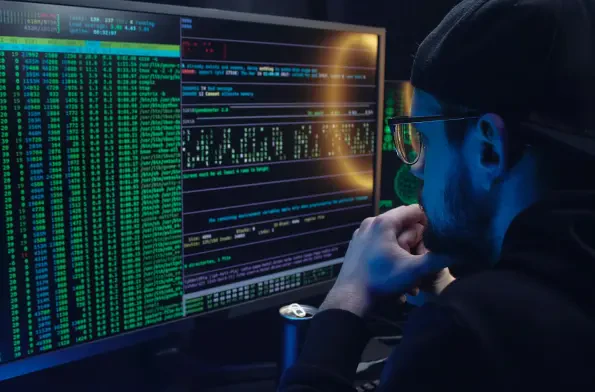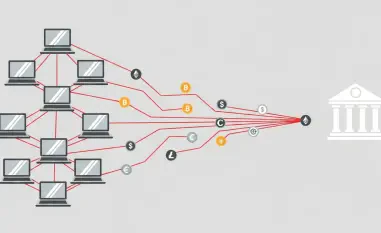In an era where digital warfare is as critical as physical combat, the U.S. Army’s Next Generation Command and Control (NGC2) platform has emerged as a pivotal tool in modernizing military operations, only to face significant cybersecurity hurdles in its early prototype stage. Designed to revolutionize how commanders process data and coordinate missions, this innovative system was recently flagged for severe security vulnerabilities that could have jeopardized critical operations and personnel safety. However, Army officials have turned this challenge into a testament to their agility by swiftly addressing the issues, showcasing a commitment to both innovation and security. This rapid response not only mitigated immediate risks but also highlighted the importance of early risk detection in the development of cutting-edge military technology. As the NGC2 platform continues to evolve, its journey offers a compelling glimpse into the complexities of balancing rapid technological advancement with the ever-looming threat of cyberattacks in defense systems.
Uncovering Critical Vulnerabilities
Early Warnings in Development
The initial evaluation of the NGC2 prototype sent shockwaves through Army leadership when a memo dated September 5, penned by Chief Technology Officer Gabriele Chiulli of the Army Chief Information Office, exposed glaring cybersecurity weaknesses. The document described systemic flaws that left the platform dangerously exposed, including the absence of Role-Based Access Control (RBAC), which meant that once a user gained access, they could roam freely across all applications and data. This breach of fundamental security principles, particularly the Pentagon’s zero-trust framework, posed a severe threat to data integrity. Additionally, unverified third-party codebases and inadequate security scanning practices were flagged as potential entry points for malicious actors. Chiulli’s assessment warned of a “very high risk” of adversaries establishing persistent, undetected access, likening the system to an opaque “black box” with insufficient oversight, thereby amplifying concerns about mission-critical vulnerabilities.
Broader Implications of Flaws
Beyond the technical shortcomings, the vulnerabilities in the NGC2 prototype raised broader questions about governance and accountability in military technology development. The lack of clear protocols for monitoring and securing the system underscored a critical gap in oversight that could have far-reaching consequences if exploited during active operations. Such deficiencies not only threatened the platform’s functionality but also risked compromising sensitive information vital to national security. The memo pointed to an alarming absence of routine checks and balances, which could have allowed threats to fester undetected for extended periods. This situation emphasized the urgent need for robust security frameworks from the outset of development, especially for a system as integral to modern warfare as NGC2. The findings served as a stark reminder that even the most innovative tools require stringent safeguards to protect against the sophisticated cyber threats that define today’s digital battlefield.
Swift Action and Strategic Recovery
Immediate Fixes and Leadership Response
In a remarkable display of efficiency, Army officials acted decisively to address the cybersecurity flaws identified in the NGC2 prototype, with Chief Information Officer Leonel Garciga and Lt. Gen. Jeth Rey leading the charge. Within weeks of the memo’s release, they announced that the critical issues had been mitigated, leveraging streamlined cybersecurity protocols to ensure rapid resolution. Garciga highlighted the effectiveness of these processes in pinpointing vulnerabilities early, preventing any significant delays in the project’s timeline. Meanwhile, Rey framed the incident as a positive outcome, noting that uncovering such flaws during the experimentation phase allowed for timely corrections before the system reached wider deployment. This proactive stance demonstrated the Army’s ability to adapt under pressure, reinforcing confidence in their approach to managing risks while pushing forward with transformative technology.
Validation Through Ongoing Testing
The Army’s response gained further credibility through the success of subsequent testing events, which showcased the platform’s improved stability post-mitigation. Notably, the Ivy Sting sprint event on September 15 provided a critical opportunity to evaluate NGC2 under real-world conditions, with reports indicating satisfactory performance despite the earlier setbacks. This achievement underscored the effectiveness of the fixes implemented and validated the Army’s emphasis on iterative development and early intervention. Maj. Sean Minton, an Army spokesperson, reiterated the commitment to delivering state-of-the-art capabilities to soldiers while maintaining rigorous security standards. The ability to resolve such significant issues without derailing key milestones reflects a maturing process that prioritizes both innovation and protection. As testing continues, these early successes suggest that the Army is on track to refine NGC2 into a reliable cornerstone of military operations.
The Role of NGC2 in Modern Warfare
A Pillar of Military Modernization
At the heart of the Army’s modernization agenda lies the NGC2 platform, a groundbreaking system engineered from the ground up to redefine command and control through agile, software-driven architecture. Unlike earlier efforts that grafted new features onto legacy frameworks, NGC2 represents a clean-slate approach, aiming to streamline decision-making from battalion to division levels with real-time data integration. Already tested at the battalion level during Project Convergence Capstone events, it is now scaling to division-level operations with the 4th Infantry Division. The Army has invested heavily in its development, awarding contracts nearing $100 million to industry leaders like Anduril and Lockheed Martin to build and enhance the prototype. This significant financial commitment underscores the high expectations for NGC2 to transform operational efficiency and adaptability in the face of modern warfare’s complex demands.
Scaling Challenges and Future Prospects
As NGC2 progresses to broader implementation, the challenges of scaling such an intricate system become increasingly apparent, particularly in maintaining security across larger units and more diverse operational environments. The transition to division-level testing with the 4th Infantry Division marks a critical phase where the platform must prove its resilience under intensified scrutiny and expanded user bases. Partnerships with private sector giants bring valuable expertise but also introduce complexities in aligning external contributions with stringent military security standards. The Army’s ongoing “sprint events” under the Ivy Sting series aim to incrementally bolster capabilities, offering a structured path to address emerging issues. Looking ahead, the platform’s success will hinge on continuous refinement and the ability to adapt to evolving cyber threats, ensuring that it remains a reliable asset for commanders navigating the intricacies of networked warfare.
Cybersecurity as a Core Priority
Lessons from Early Detection
The NGC2 incident shines a spotlight on the critical importance of embedding cybersecurity at the earliest stages of military technology development, a principle that the Army now champions as a cornerstone of its strategy. The early identification of vulnerabilities, while initially alarming, ultimately served as a valuable lesson in the power of proactive risk management. Leaders like Lt. Gen. Rey have emphasized that detecting flaws during the experimentation phase is a sign of robust processes, allowing for corrections before systems reach critical deployment stages. This approach contrasts with past tendencies to address security as an afterthought, often leading to costly retrofits or operational risks. The Army’s experience with NGC2 reinforces the need for continuous vigilance and iterative improvements, ensuring that transformative tools are fortified against cyber threats from inception to implementation.
Adapting to a Connected Battlefield
The broader trend of increasing connectivity in military systems amplifies the urgency of robust cybersecurity measures, as platforms like NGC2 become prime targets for adversaries seeking to exploit digital vulnerabilities. Modern command and control architectures rely heavily on networked data flows, heightening risks of insider threats, external breaches, and data spillage that could undermine missions. The Army’s commitment to integrating security early in the development lifecycle reflects a strategic shift toward anticipating and neutralizing these dangers before they manifest. This evolving mindset prioritizes resilience alongside innovation, recognizing that the pace of technological advancement must be matched by equally dynamic defenses. As military operations grow more dependent on digital infrastructure, the lessons learned from NGC2’s cybersecurity journey will likely shape future policies, ensuring that security remains an inseparable component of progress in defense technology.













